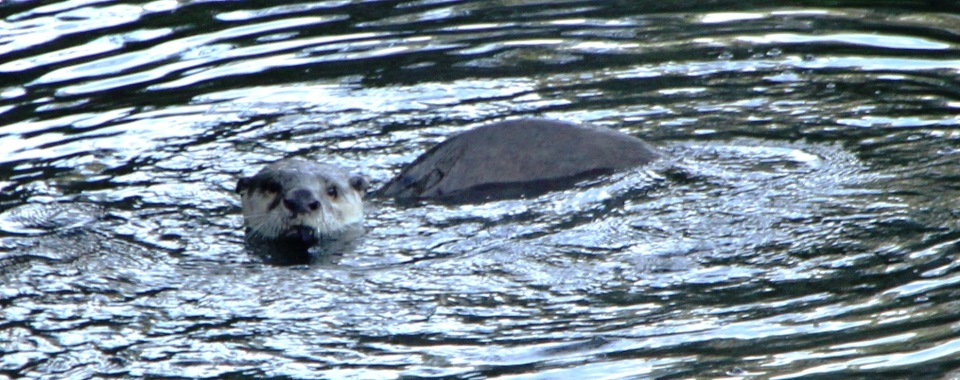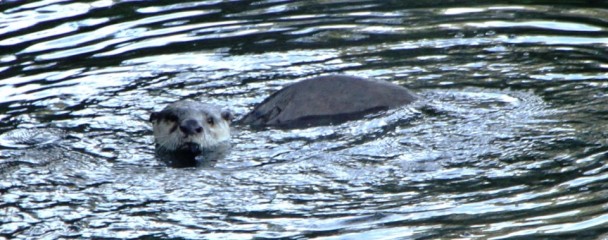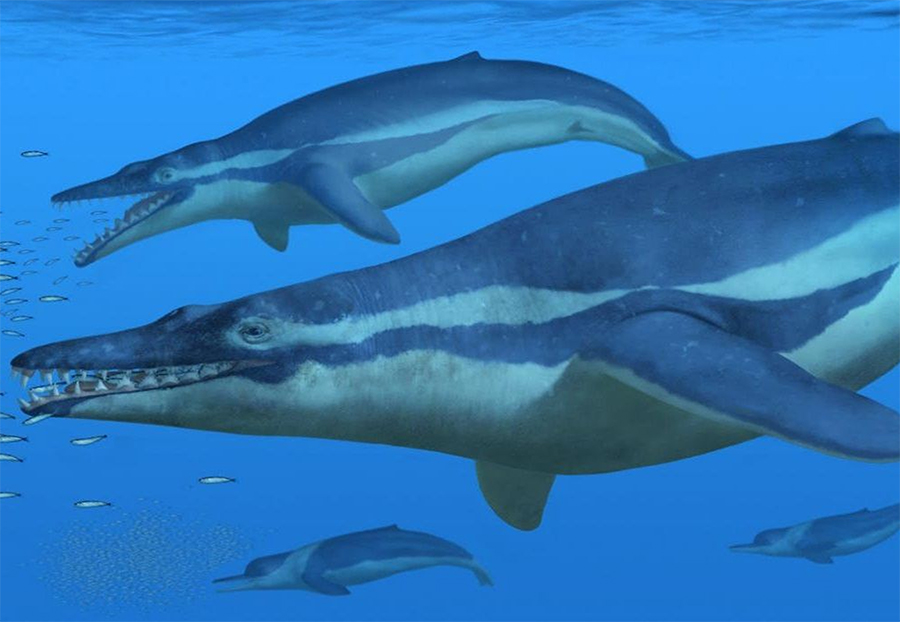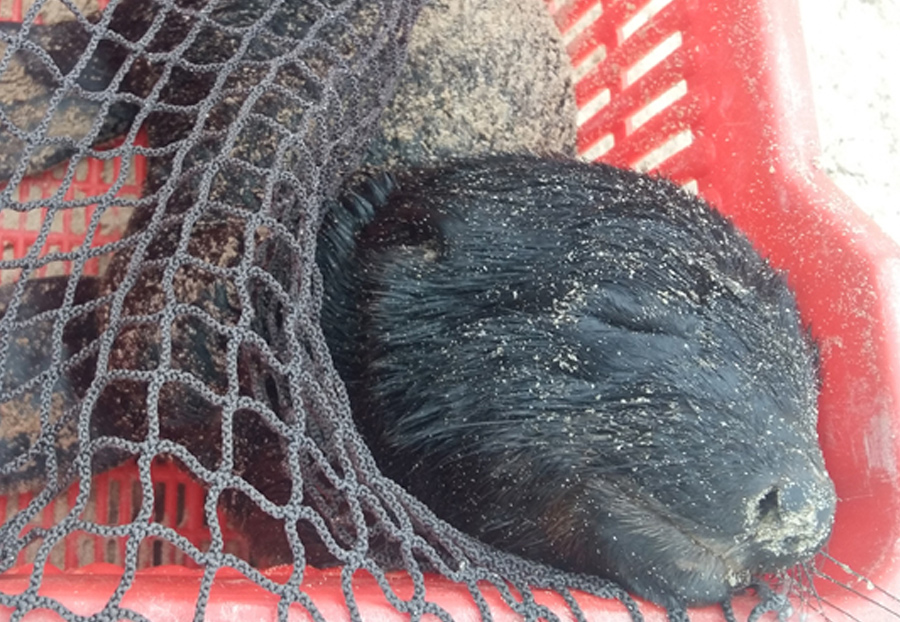Cape clawless otter
When walking along the Plettenberg Bay beaches animal tracks can be seen in the sand. They can be from Mongooses, dogs, cats, birds and otters. There are 13 species of otters in the world. They are closely related to the honey badgers and wolverines and lives in both marine and fresh water. In the Western Cape there is one species of otter, the African clawless otter (Aonyx capensis) as they are characterized and named by their webbed clawless feet. In Plettenberg Bay there is believed to be at least 4 family groups of the Cape clawless otter. Tracks are seen regularly on the main beach at the Piesang River, along Lookout beach and the Matjies River riverbank.
African clawless otters are found from open coastal regions to dense forest areas. They live in areas surrounded with permanent fresh water. They can hunt in both fresh and marine water and need freshwater to drink. The main part of their diet is water-dwelling animals e.g. crabs, fish, frogs, tortoises and worms. They dive to catch their prey and will swim to shore where they can eat it. Their fore paws are excellent for digging after food in bottoms of ponds, rivers, looking under rocks and logs. African clawless otters have long sensitive whiskers that sense and pick up movement of potential prey in the water.
African clawless otters are solitary animals that can live in a neighbouring territory with family groups of up to 5 individuals. Each individual will have their own home range in that territory and keeps to themselves unless it’s breeding season. Their breeding season is in December and 1-3 pups are born around 2 months later. They will be solely raise by their mother and stay with her until they reach full maturity at 1 year of age.
African clawless otters don’t have many predators since they are quick in the water and have burrows on land making them hard to catch. The major threat is pythons that can lay in lure near the water and human activities. The otters will forage in man-made fisheries and are therefore hunted and at risk of becoming entailed in their nets. Overfishing by humans is reducing their food supply and foresting takes away their homes. African clawless otters are not threatened in South Africa with approximately 21,500 individuals and therefore no protection has been established for the species. They occur in already protected areas around the country, the closest one to Plettenberg Bay is at Natures Valley in the Tsitsikamma Nature Reserve.
African clawless otters leave noticeable clues to where they live. Their footprints are unmistakable on the riverbanks and beaches. They also leave faeces, urine and emit a variety of whistles, huffs, growls and screams to communicate with other otters.





